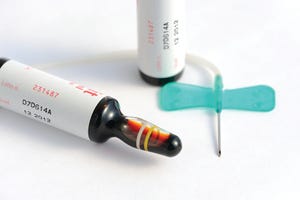January-February 2018 Featured Report
Biopharmaceutical products for IV infusion (WWW.PHOTOS.COM)
At the Hynes Convention Center in Boston, MA, during Knect365’s “Biotech Week Boston” in late September of 2017, one track of the BioProcess International Conference focused on drug products, fill–finish, and formulations. Presenters represented a number of major biopharmaceutical companies — AbbVie, Amgen, Biogen, Eli Lilly, Genentech (Roche), GlaxoSmithKline, Johnson & Johnson, Lonza, Pfizer, and Sanofi — as well as suppliers Bosch, Merck (MilliporeSigma), ReForm, and Single-Use Support. They focused on predictive modeling, quality by design (QbD) and process analytics, freezing–thawing and storage, endotoxin control, single-use technologies, and formulations.
Early on, James Colandene (manager of biopharmaceutical product sciences at GSK) cautioned that development and characterization of a drug-product manufacturing process should not be taken for granted. He acknowledged in his introductory remarks on Tuesday morning that most development an...
The expanding complexity of biopharmaceutical manufacturing puts increasing pressure on single-use systems to meet the demands of the modern industry’s global footprint. Individual sites within a given organization often are specialized to a fixed number of “modular” process steps (
1
). Such product segregation increases plant efficiency and output while making the best of staff competencies. But it also can create an additional need for transportation of intermediate or bulk drug substance (BDS) over long distances.
Freezing generally is used to lengthen the shelf life of such materials for global shipping and to ensure their stability and security during transport (
2
,
3
). But it places an additional burden on single-use systems (requiring them to withstand exposure to subzero temperatures) and on drug manufacturers (who must prove the suitability of such systems for use with their processes, storage conditions, and handling procedures). Plastics become brittle at lower temperatures, making physical...
As the global pharmaceutical industry implements serialization (track and trace from manufacturing to dispensing) to meet governmental regulatory requirements, other opportunities arise for drug companies. The main driver here is to improve the integrity of the overall drug supply chain, but other meaningful business benefits can come from serialization. Generally accomplished through automated, electronic means, it involves such practices as recording, authenticating, maintaining, and sharing accurate records of products.
Outside-the-Box Benefits
In addition to tightening up the supply chain and channels of trade, serialization can provide great
efficiencies
for processing shipments and knowing what specific packages are included in them down to the lowest salable unit. Tracking information can be updated continuously and provided to brand owners and supply chain partners on dashboards or through mobile applications. Developments in enhanced track and trace can be used to detect diversion of products t...








